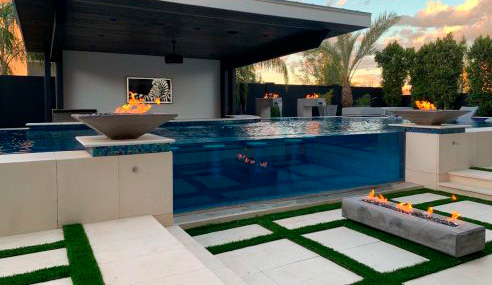Professional Advice: Maximizing Transparency and Performance with Acrylic Pool Windows
Acrylic pool windows have become a hallmark of luxury and innovation in modern swimming pool design. Their crystal-clear transparency, strength, and versatility make them the preferred choice fot both residential and commercial pools. However, to fully realize their benefits and ensure long-term performance, it’s essential to follow expert advice throughout selection, installation, and maintenance.
Why Acrylic?
Acrylic panels outperform glass in pool applications for several reasons. Acrylic maintains its clarity even at greater thicknesses, while glass tends to develop a greenish tint and optical distortion as it gets thicker. High-quality acrylic transmits up to 92% of visible light, ensuring a bright, undistorted underwater view. Acrylic’s impact resistance is up to 16 times greater than glass, making it far safer in the event of acidental impact or extreme conditions.
Design and Engineering Considerations
Professional engineers must be involved from the earliest stages. The thickness of the acrylic panel is determined by the size of the window and the water pressure ir must withstand, with careful, calculations needed to prevent deflection and microscopi cracks that can compromise clarity. The pool shell around the windows must be engineered to support the panel securely, often with a recessed rebate and reinforced concrete structure on the backside.
Installation Best Practices
- Waterproofing: The joint between acrylic and concrete is the most vulnerable point for leaks. Use only sealants and waterproofing systems recommended by the panel manufacturer, and ensure compatibility between all materials.
- Expansion and Contraction: Acrylic expands and contracts more than concrete, so flexible grouts and sealants are essential to accommodate movements and prevent stress on the panel.
- Surface Protection: To avoid scratches during construction, keep troweling and finishing tools away from the panel edges. Many professionals recommend installing a tile border around the panel to protect it from plaster or pebble finishers.
- Expert Installation: Because of the technical challenges, most pool builders rely on specialist installers for acrylic windows. This ensures proper handiling, placement, and sealing, reducing the risk of leaks or structural issues.
Maintenance and Longevity
Acrylic is easy to maintain but does require regular care to preserve it’s clarity. Clean with mild soap and a soft cloth, avoiding abrasive materials or harsh chemicals that can scratch the surface. Minor scratches can often be buffed out with specialized compounds. Regular inspections are recommended to catch any early signs of leaks or surface damage.
Aesthetic and Safety Benefits
Acrylic windows don’t just look stunning-they also improve pool safety by providing unobstructed views, allowing for easier supervision of swimmers, especially children. The clarity and brightness they bring to a pool enironment are unmatched, enhancing both the user experience and the overall value of the property.
Conclusion
Acrylic pool windows offer a blend of beauty, safety, and durability that is hard to surpass. To achieve the best results, always engage with experienced engineers and installers, follow best practices for installation and maintenance, and choose high-quality materials. With proper planning and care, acrylic windows will provide years of spectacular, crystal-clear underwater views.

